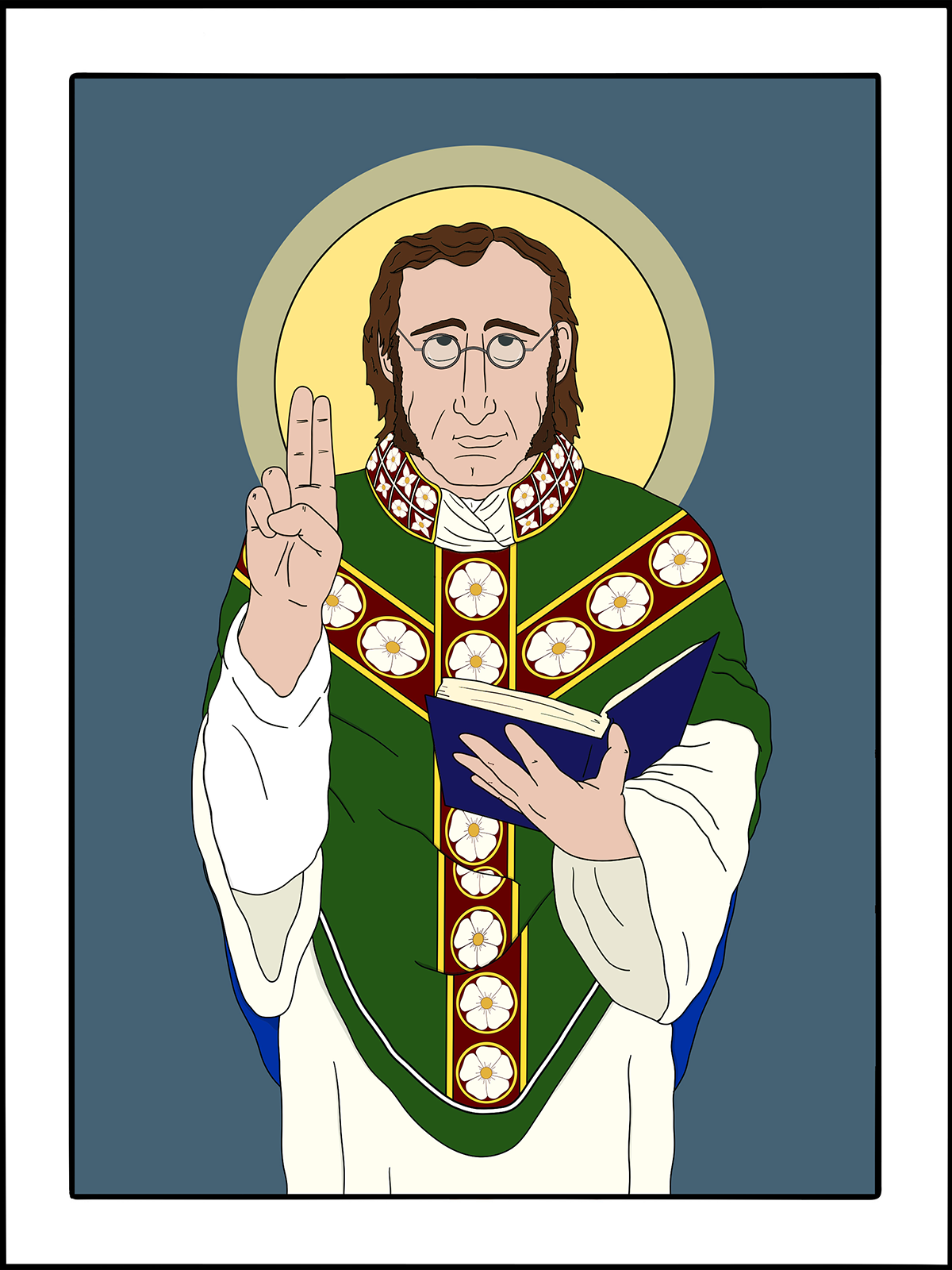
August 7
John Mason NealE
Priest and Hymnographer, 1866
art by Rev. Kirsten Kohr of Geneva, Ohio Grant, O God, that in all time of our testing we may know your presence and obey your will; that, following the example of your servant John Mason Neale, we may with integrity and courage accomplish what you give us to do, and endure what you give us to bear; through Jesus Christ our Lord, who lives and reigns with you and the Holy Spirit, one God, for ever and ever. Amen.
John Mason Neale was born in London in 1818, studied at Cambridge, where he also served as tutor and chaplain, and was ordained to the priesthood in 1842. Chronic ill health made parish ministry impractical, but in 1846, he was made warden of Sackville College, a charitable residence for the poor, which position he held for the rest of his life. Both a scholar and a creative poet, his skills in composing original verse and translating Latin and Greek hymns into effective English lyrics were devoted to the church and were but one expression of his active support for the Oxford Movement in its revival of medieval liturgical forms. With such familiar words as “Good Christian men, rejoice” (The Hymnal 1982, #107), “Come, ye faithful, raise the strain” (#199; #200), “All glory, laud, and honor” (#154; #155), “Sing, my tongue, the glorious battle” (#165; #166), and “Creator of the stars of night” (#60), he greatly enriched our hymnody.
Gentleness combined with firmness, good humor, modesty, patience, devotion, and an unbounded charity describe Neale’s character. A prolific writer and compiler, his works include Medieval Hymns and Sequences, Hymns of the Eastern Church, Essays on Liturgiology and Church History, and a four-volume commentary on the Psalms. He established the Camden Society, later called the Ecclesiological Society, and, consistent with Anglo-Catholic principles that united liturgical piety with compassionate social action, he founded the Sisterhood of St. Margaret for the relief of suffering women and girls.
Neale faced active persecution for his liturgical and theological principles. He was forced to resign his first parish due to disagreements with his bishop. He was physically attacked several times, including at a funeral of one of the sisters. Mobs threatened both him and his family, believing him to be a secret agent of the Vatican attempting to destroy the Church of England from within.
Though his work was little appreciated in England, his contributions were recognized both in the United States and in Russia, where the Metropolitan presented him with a rare copy of the Old Believers’ Liturgy. He died on the Feast of the Transfiguration in 1866, at the age of 46, leaving a lasting mark on Anglican worship.
Excerpted directly from “Lesser Feasts and Fasts 2022,” p. 346-347.

